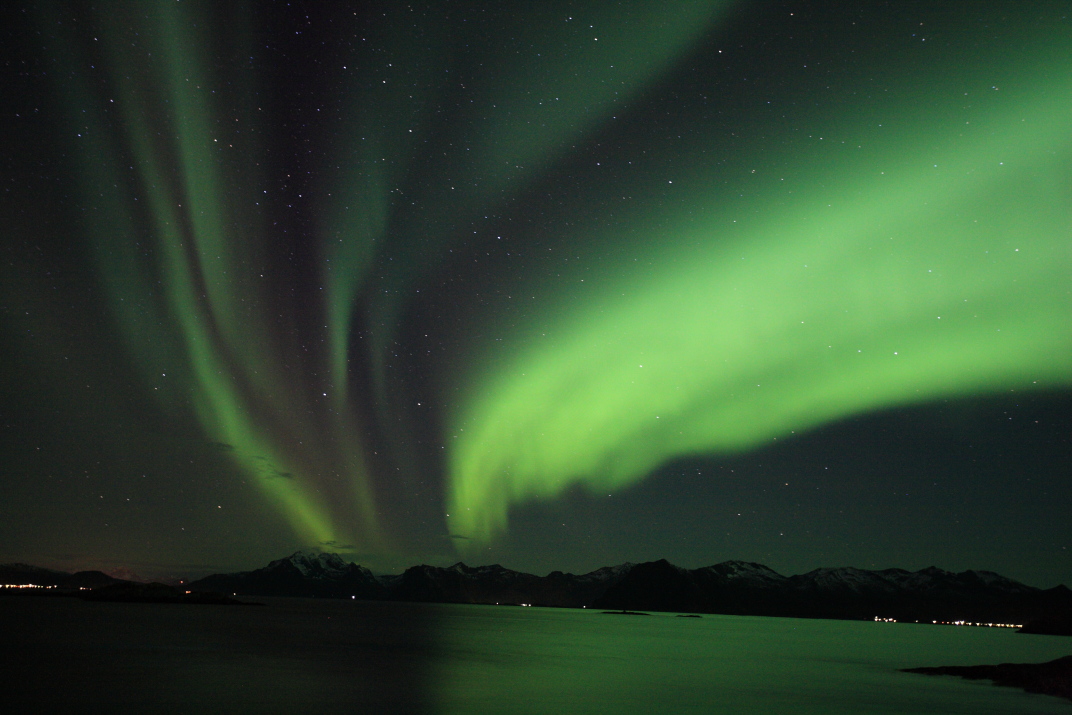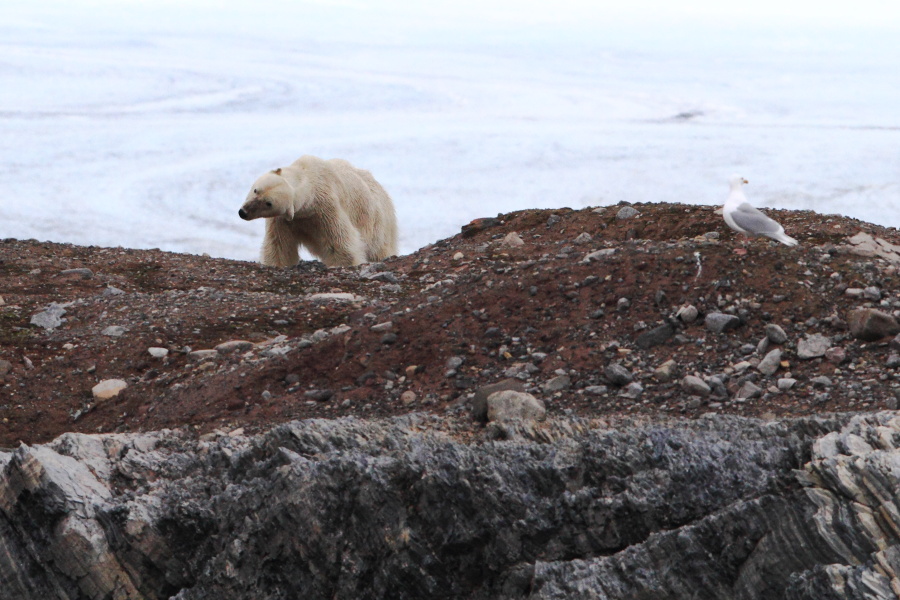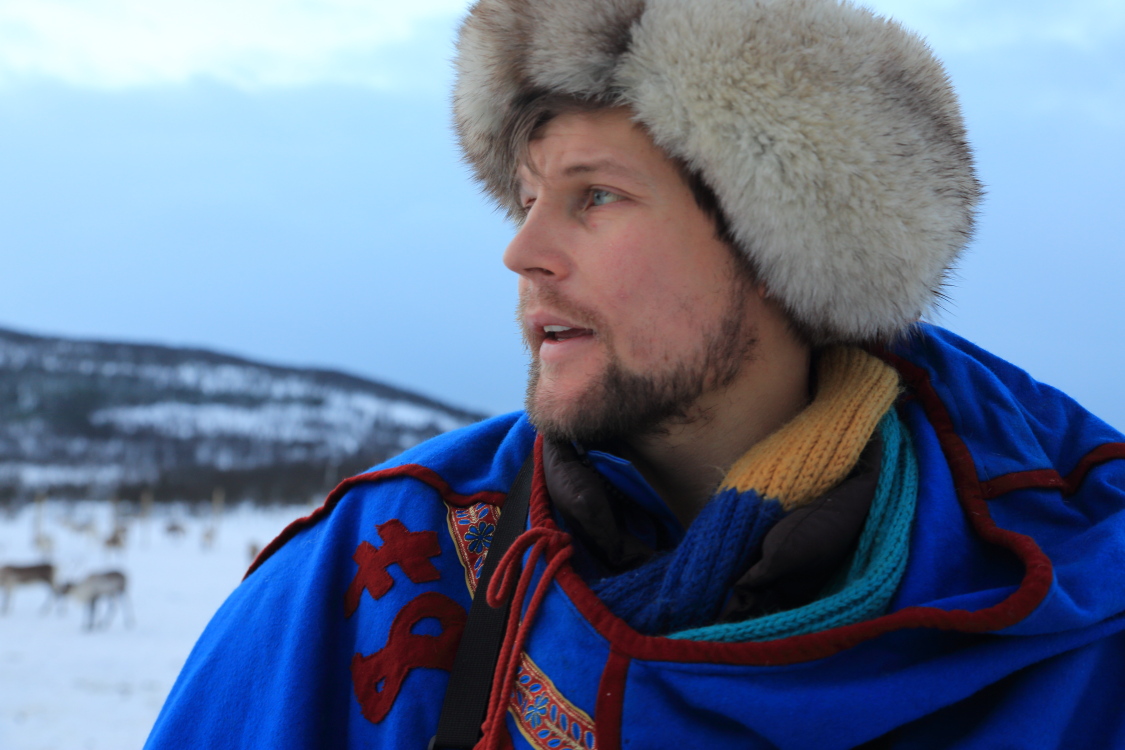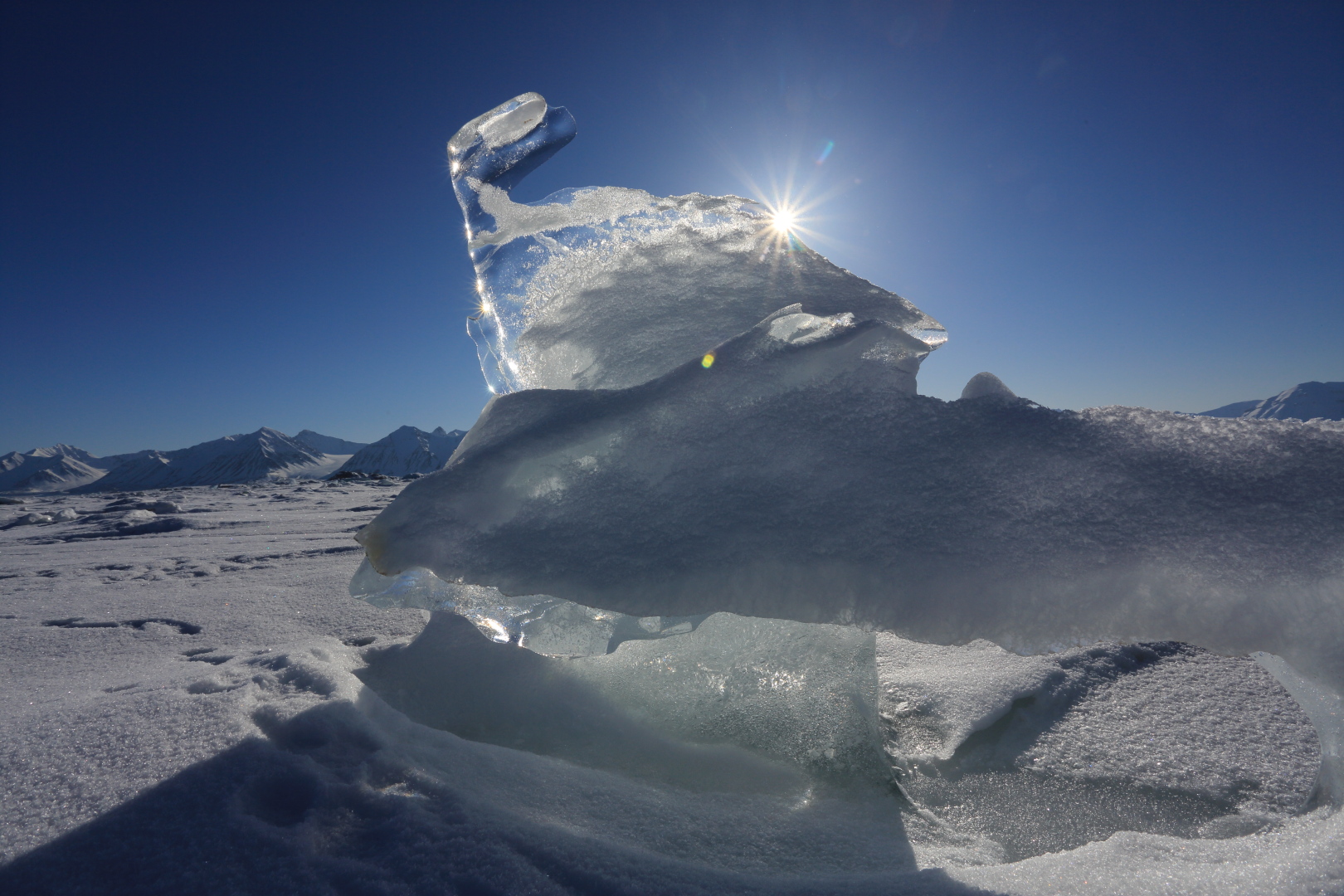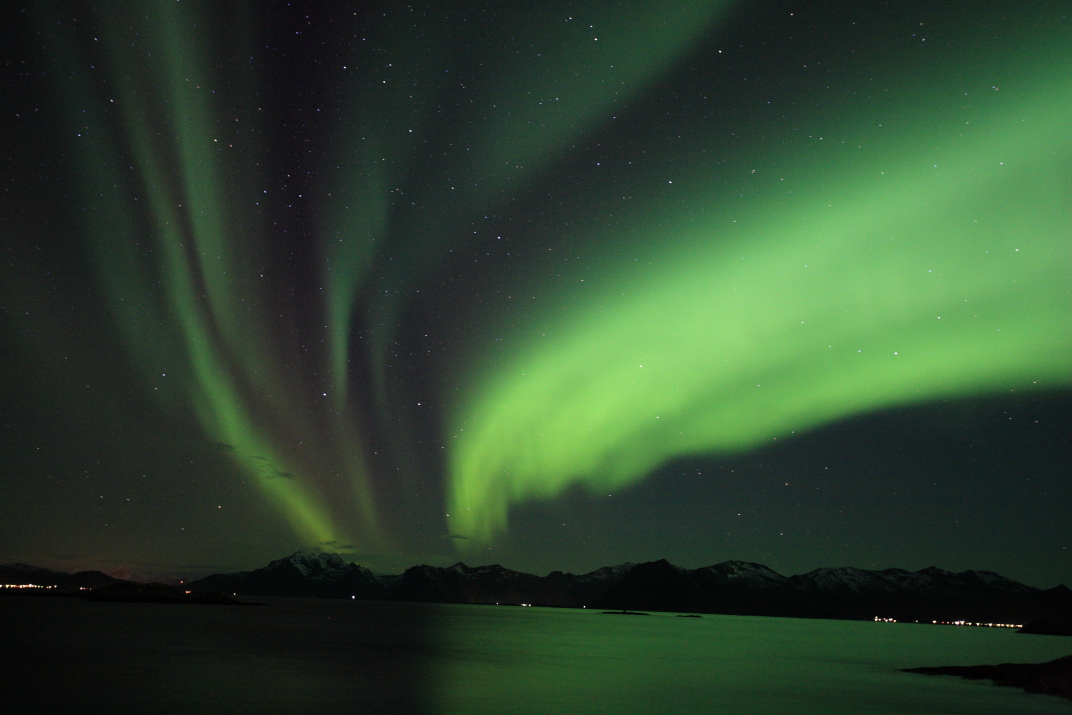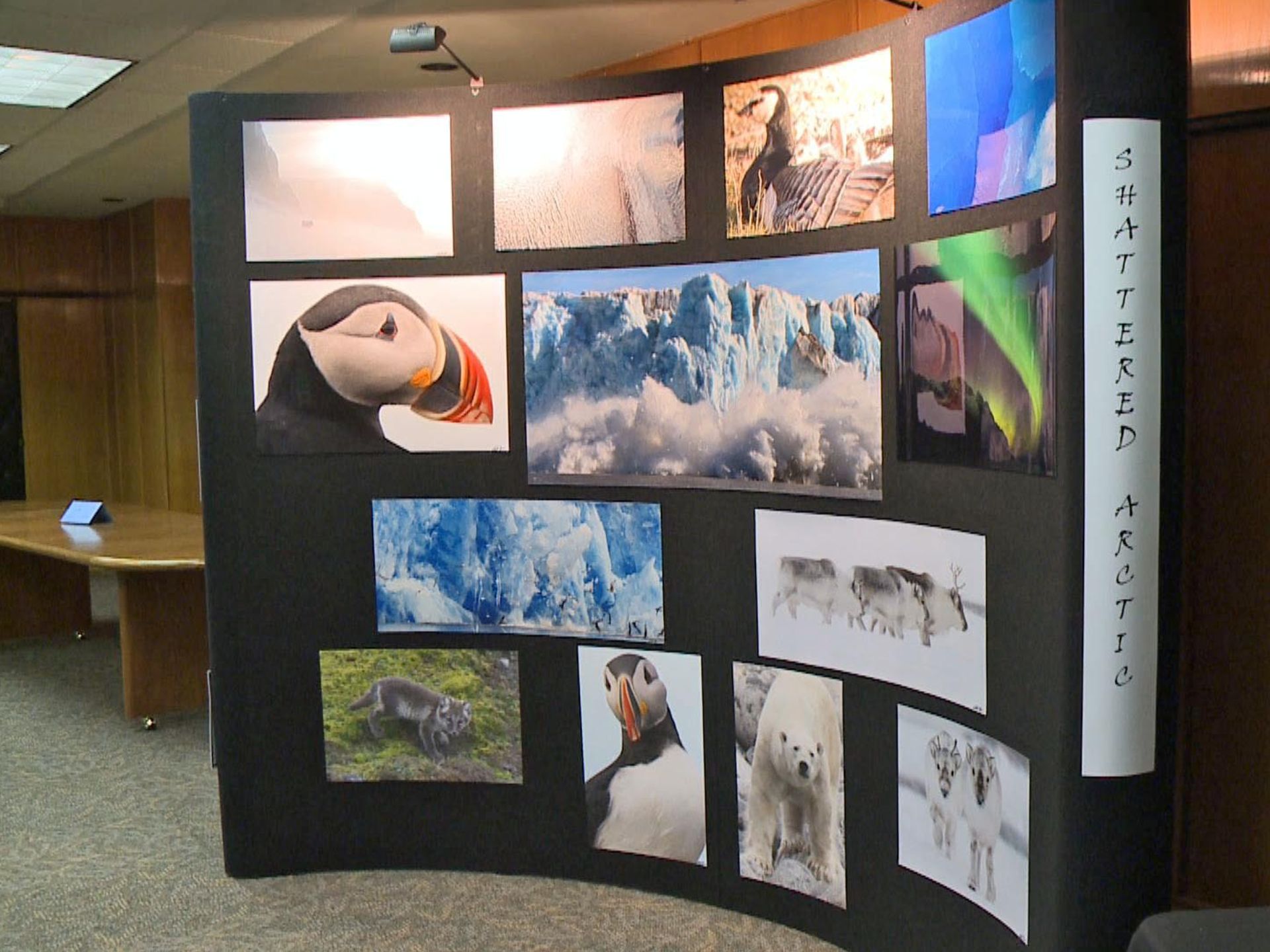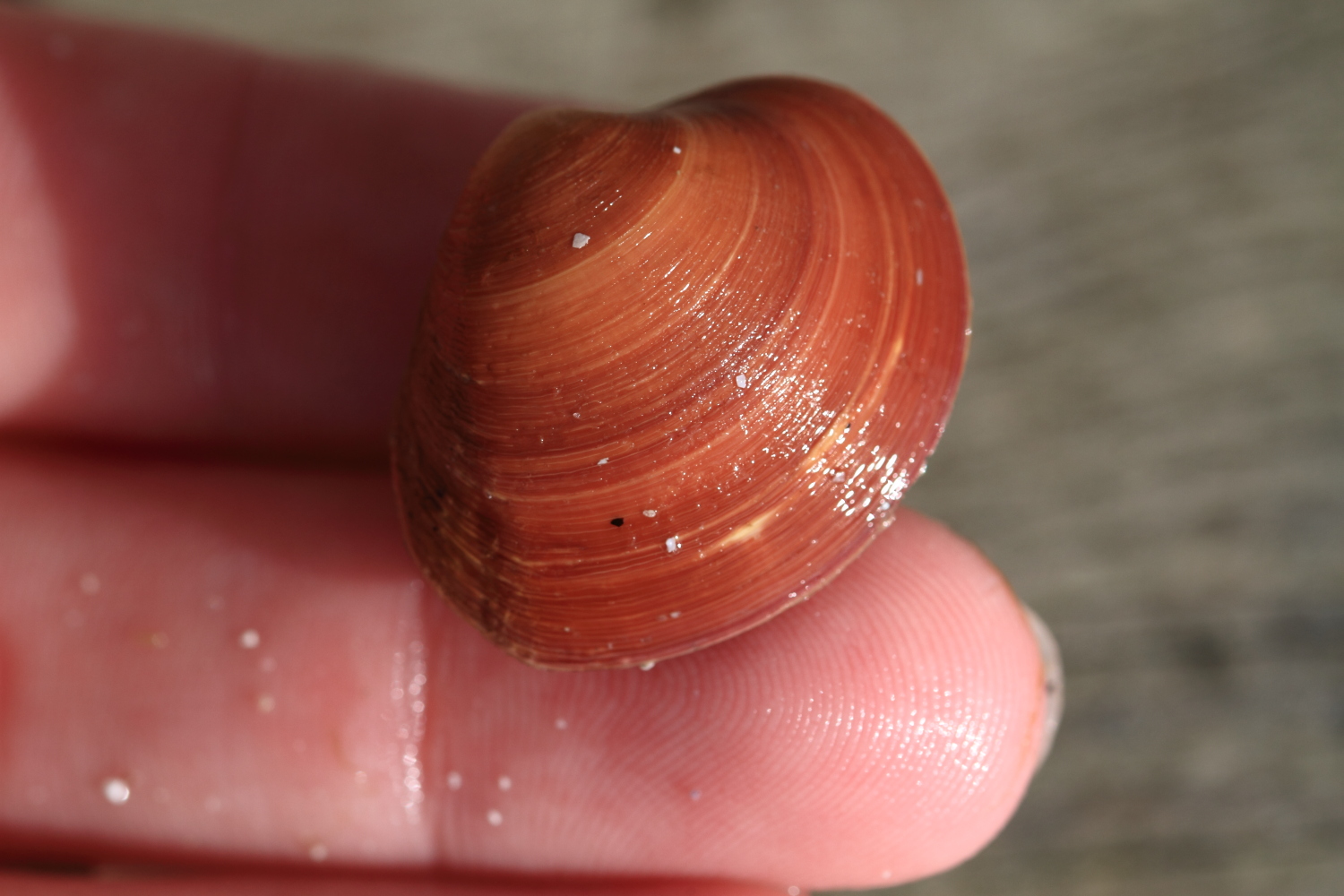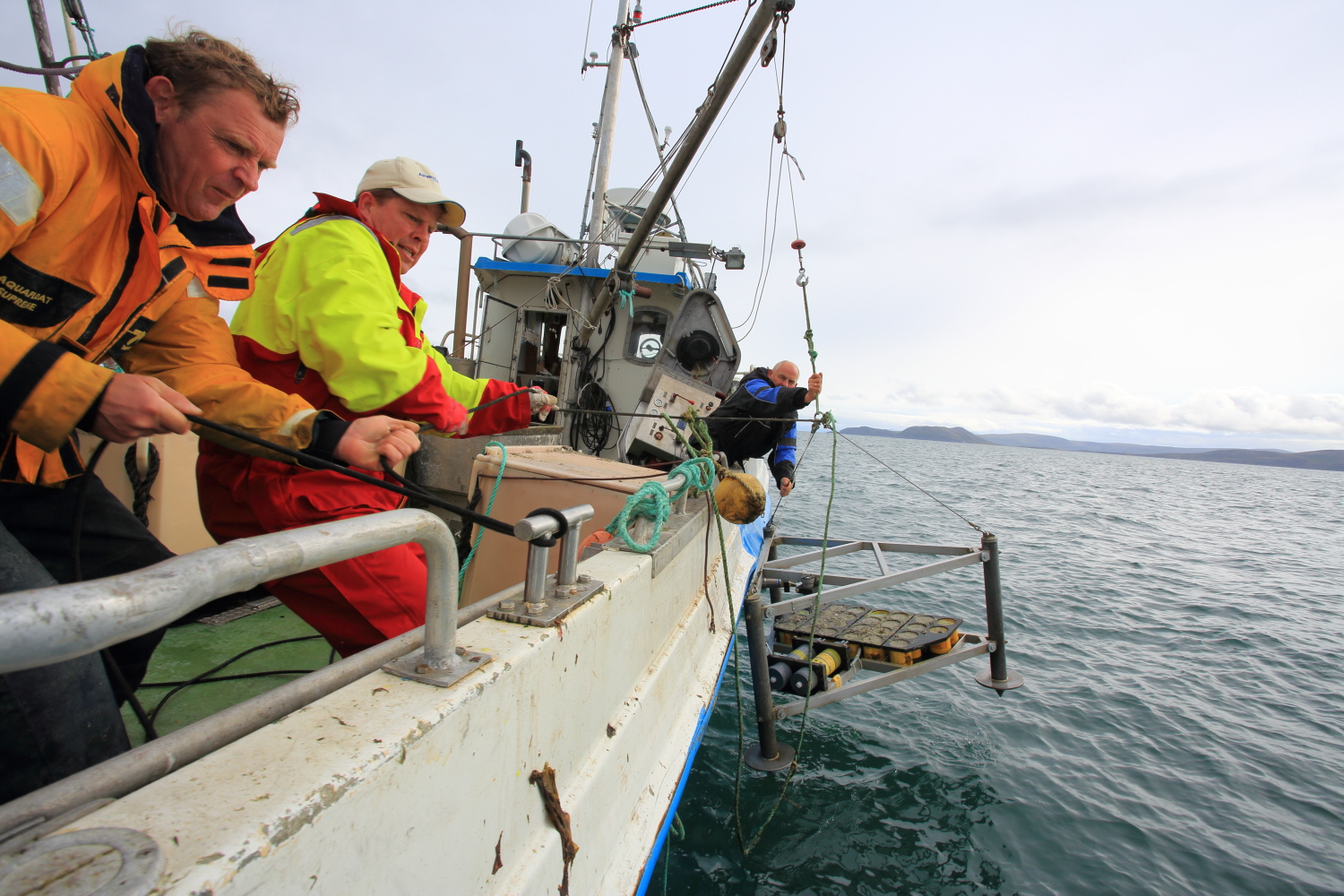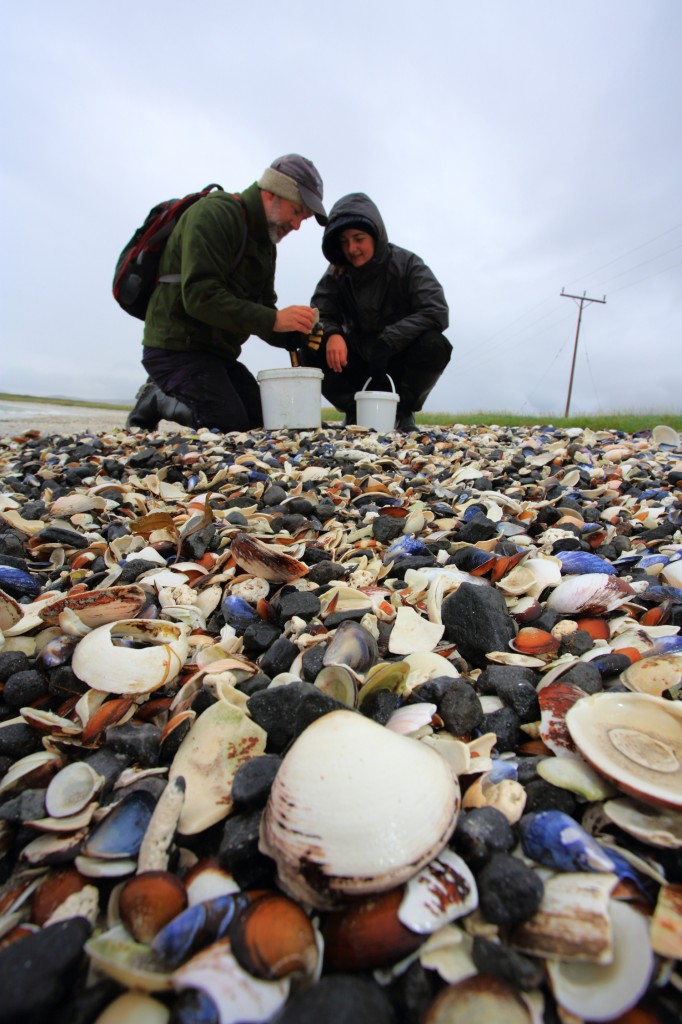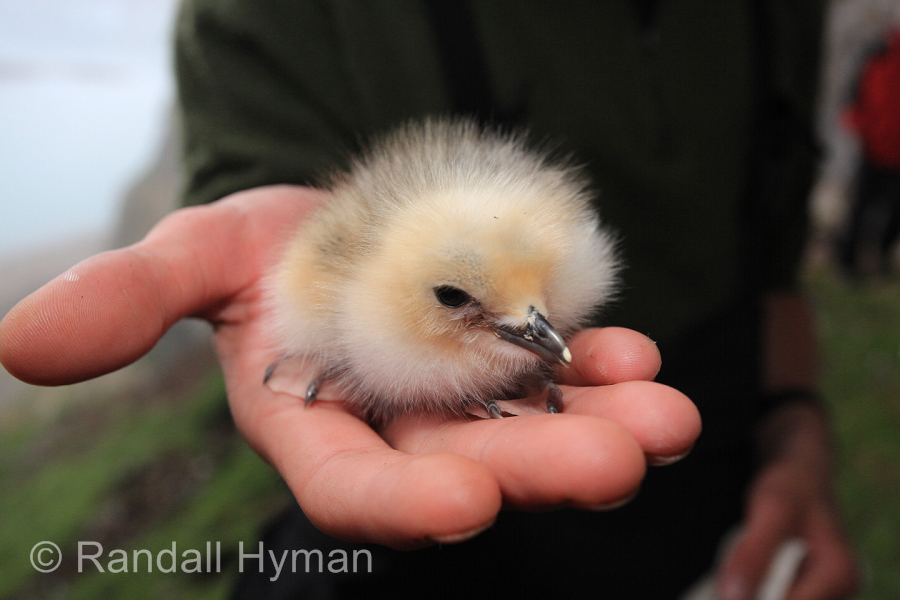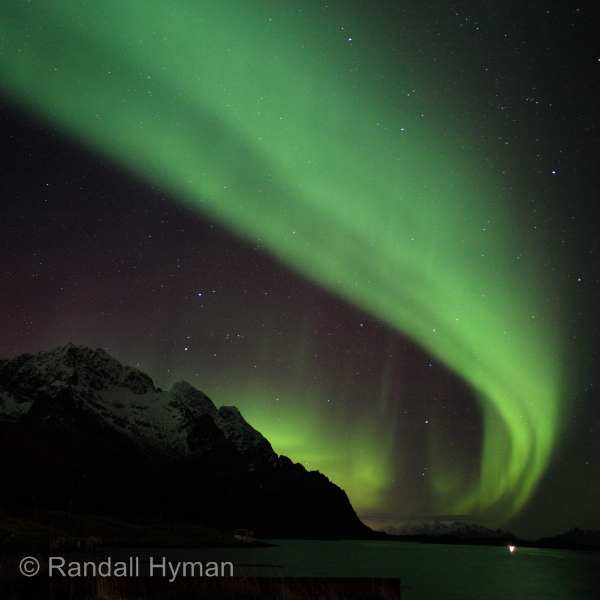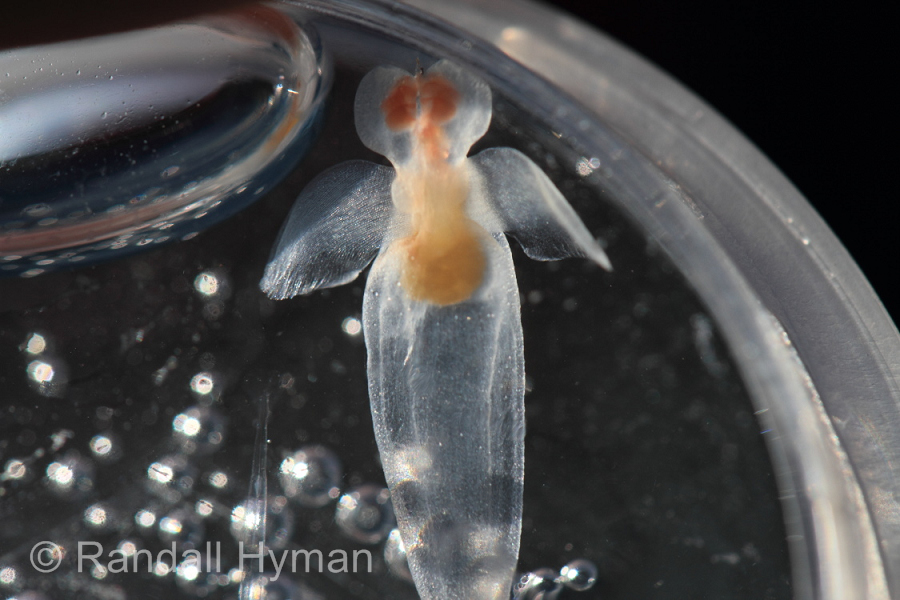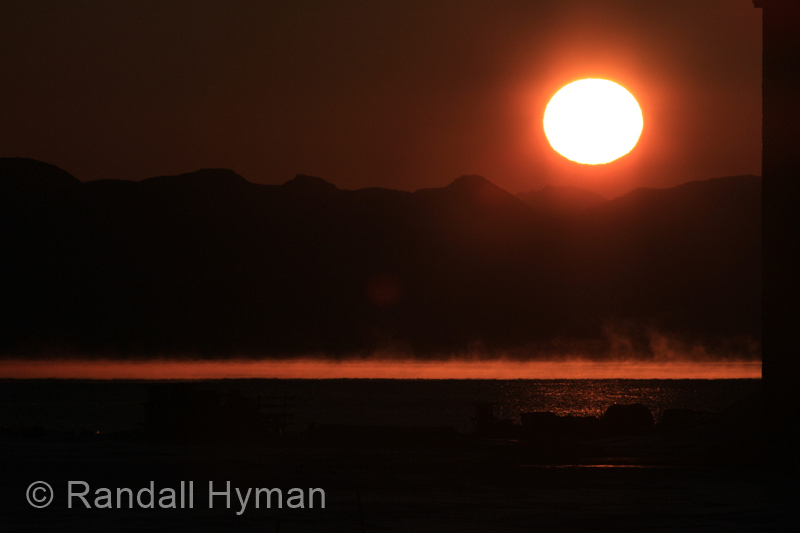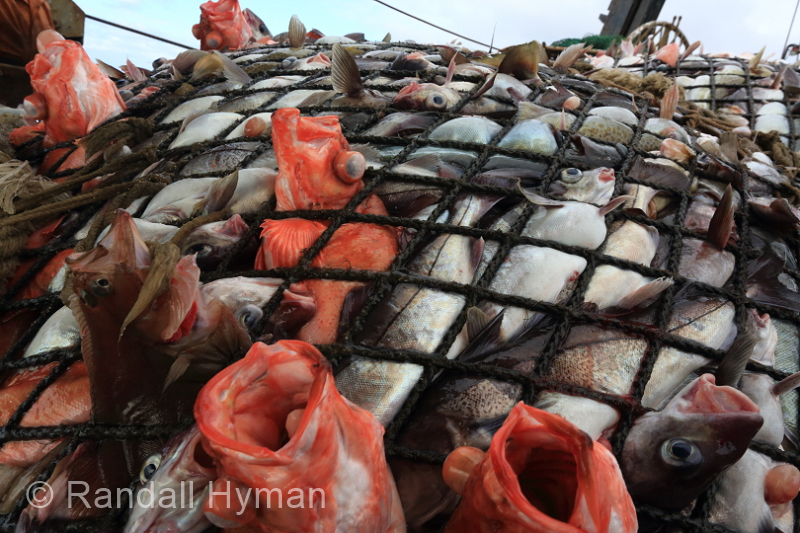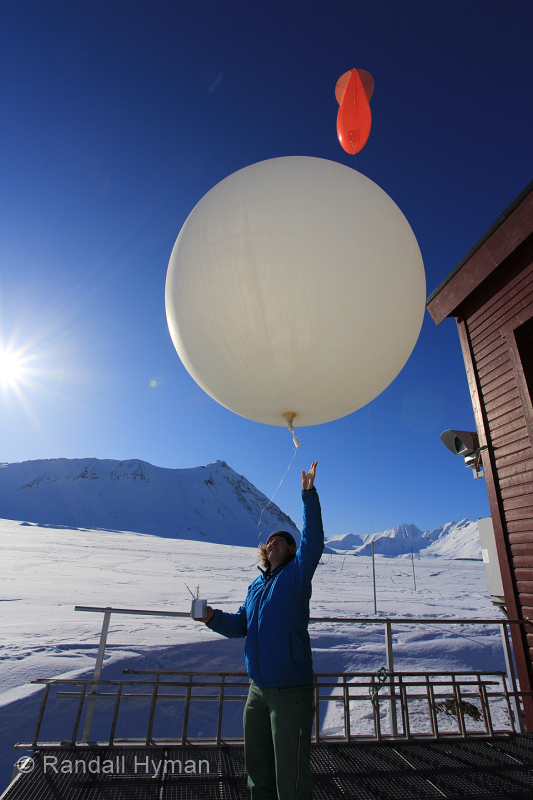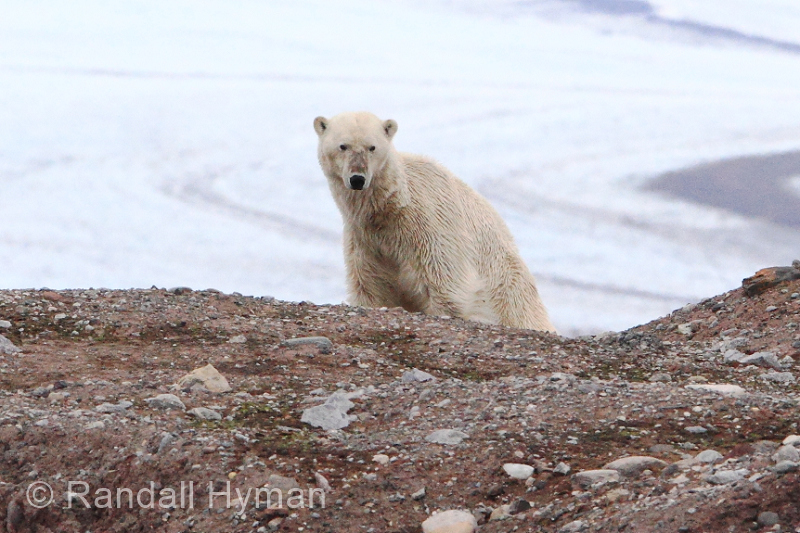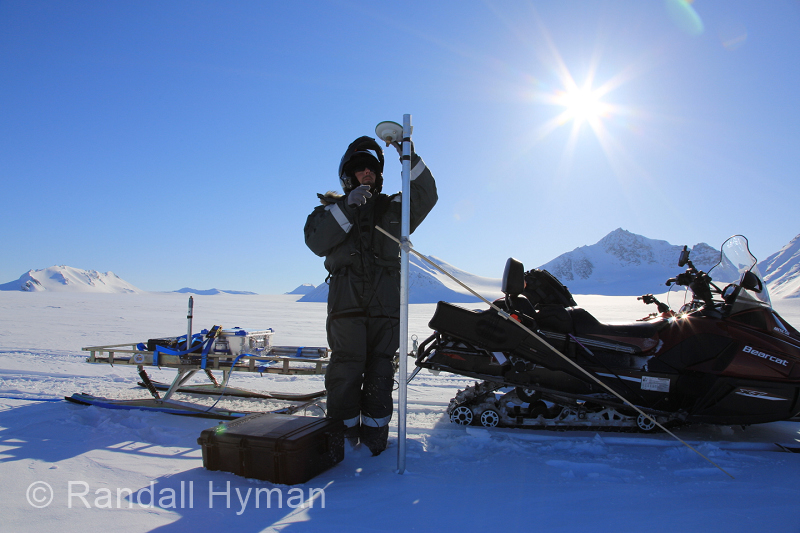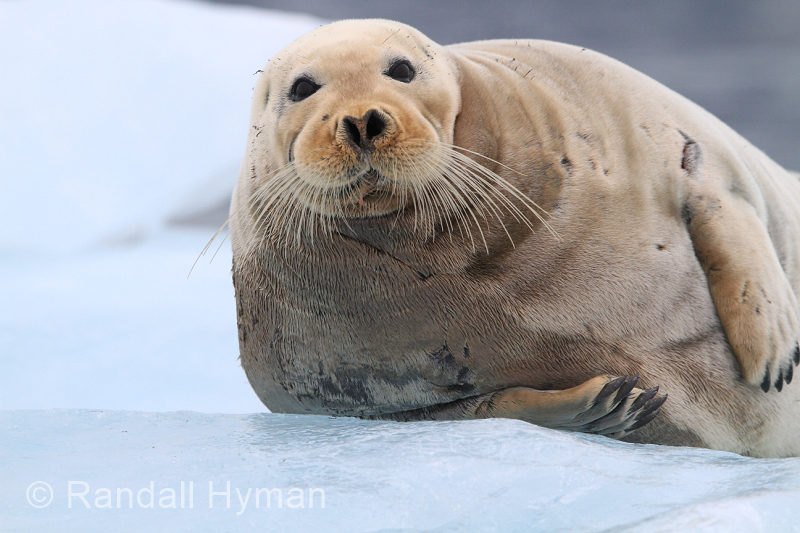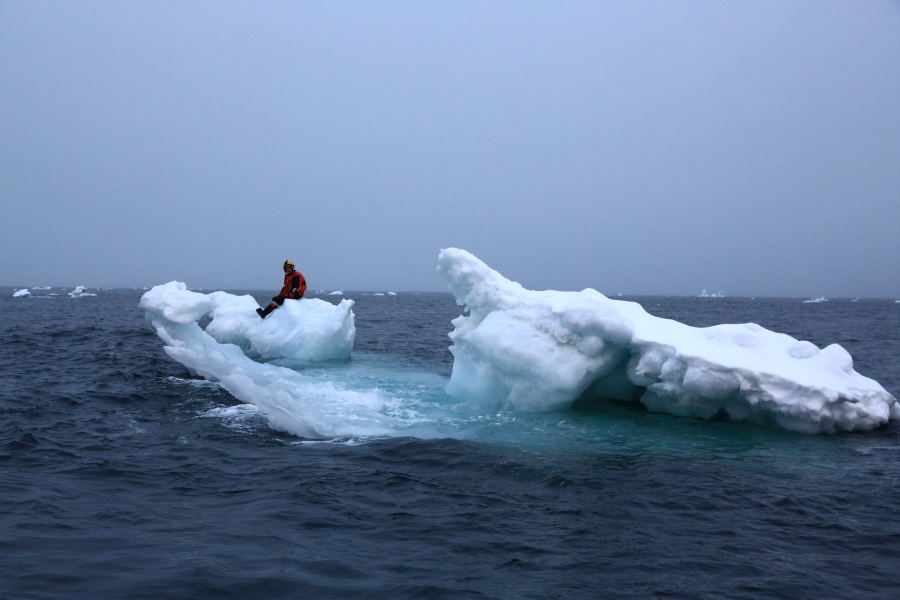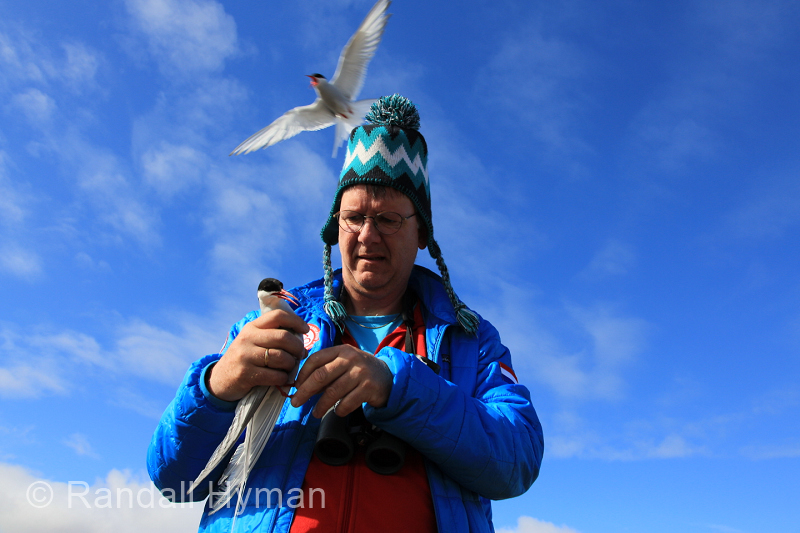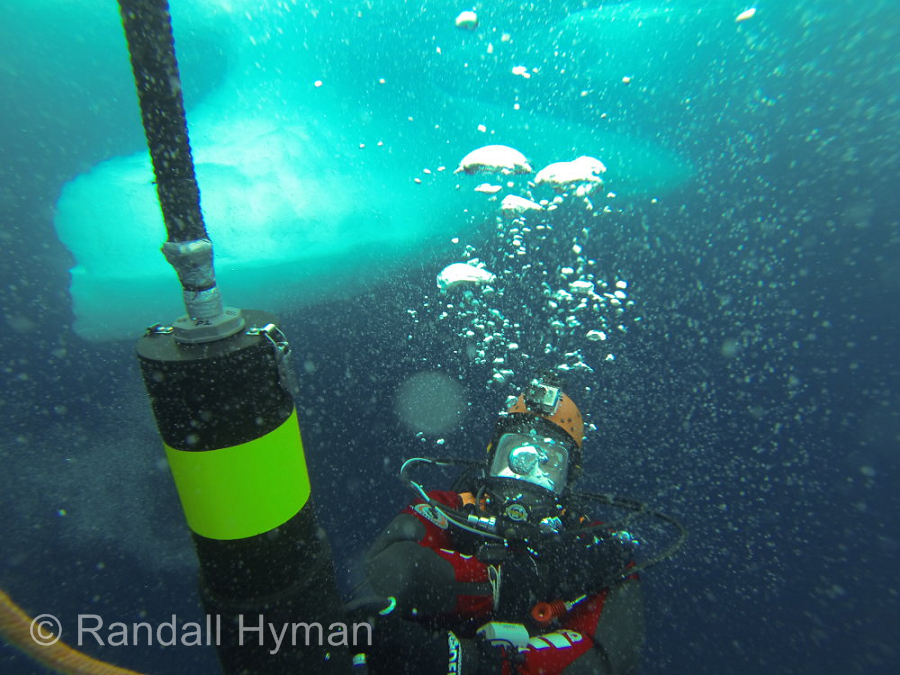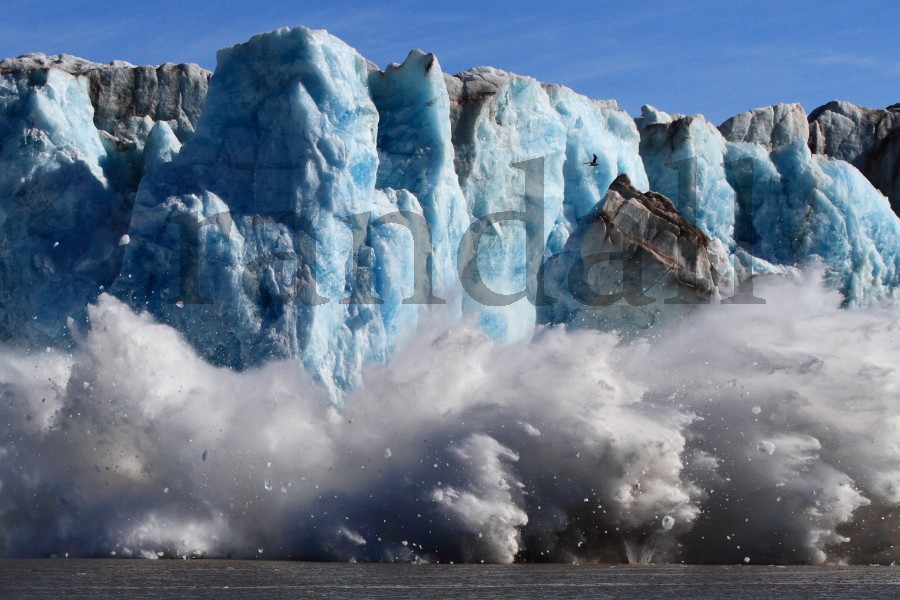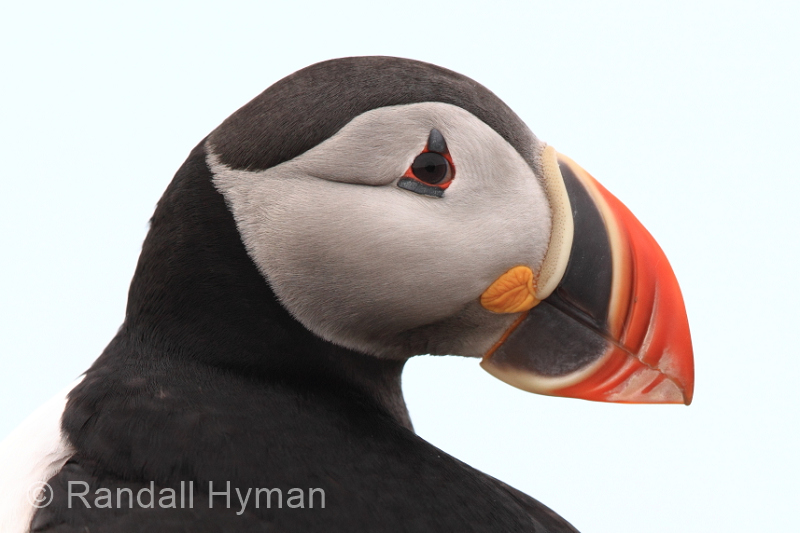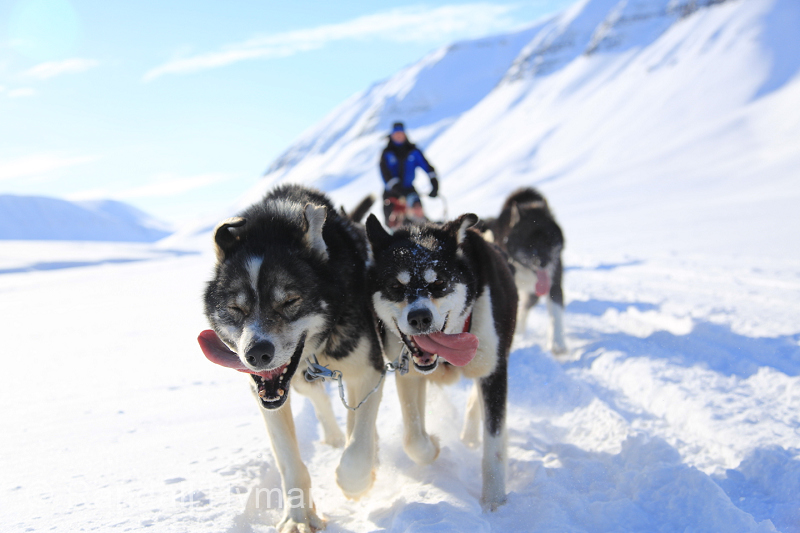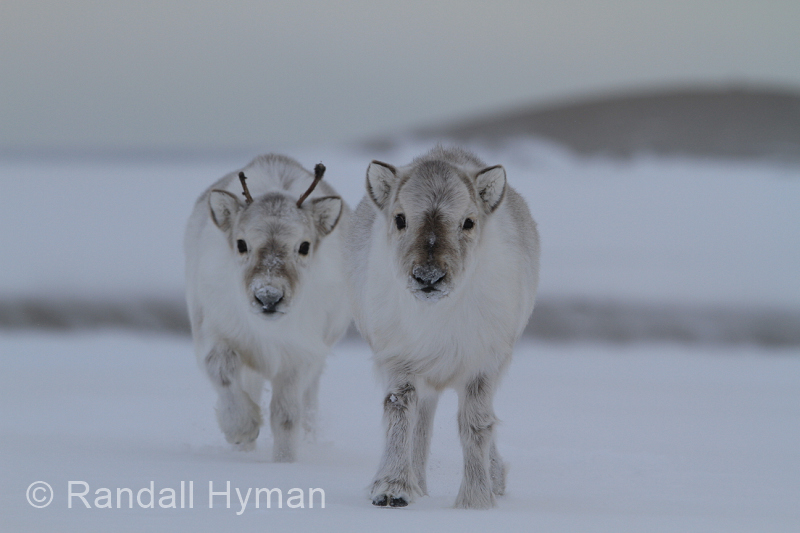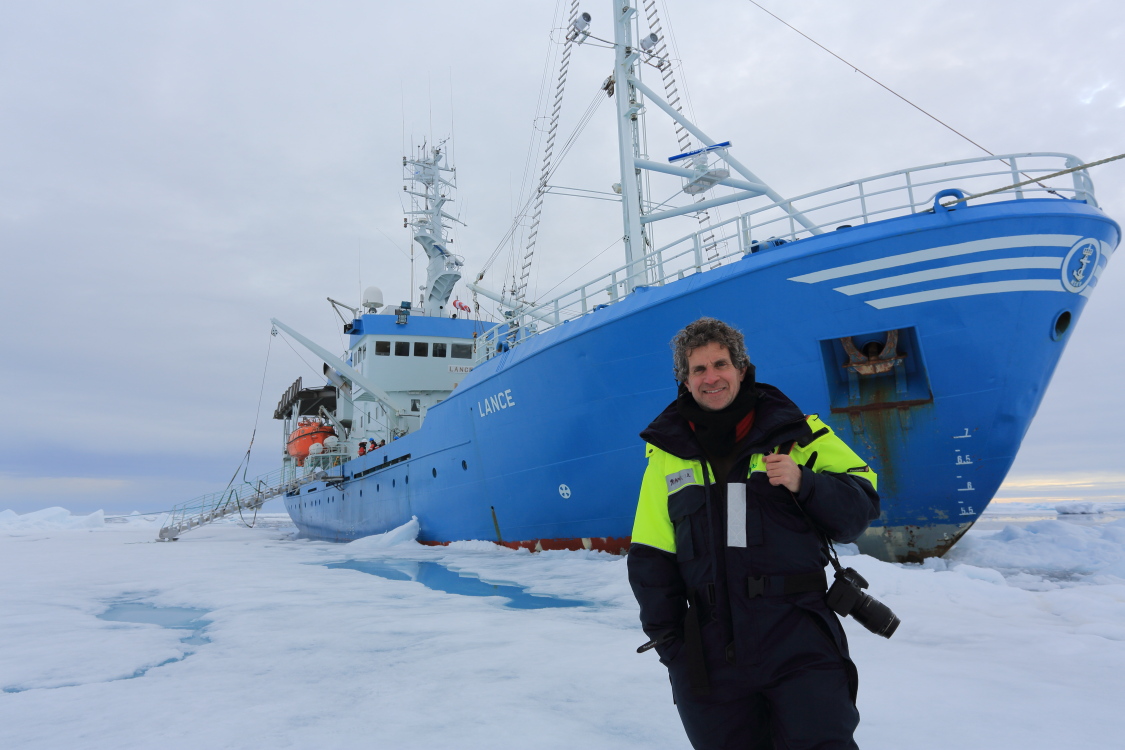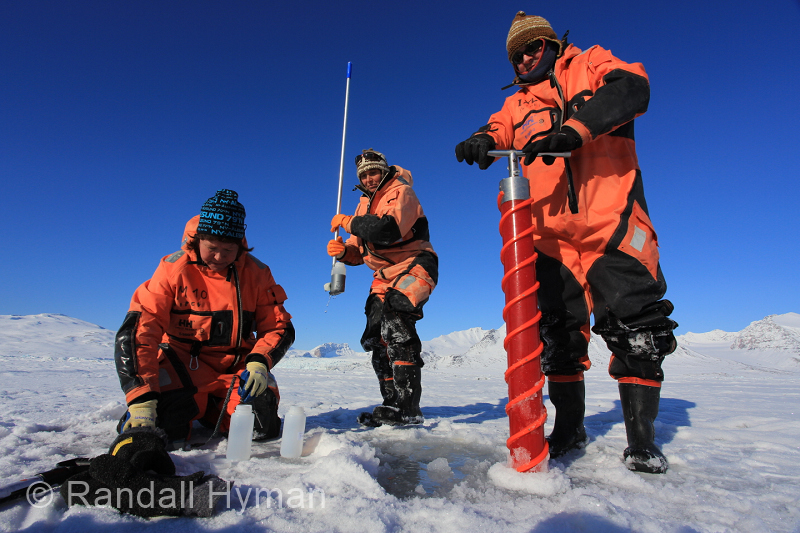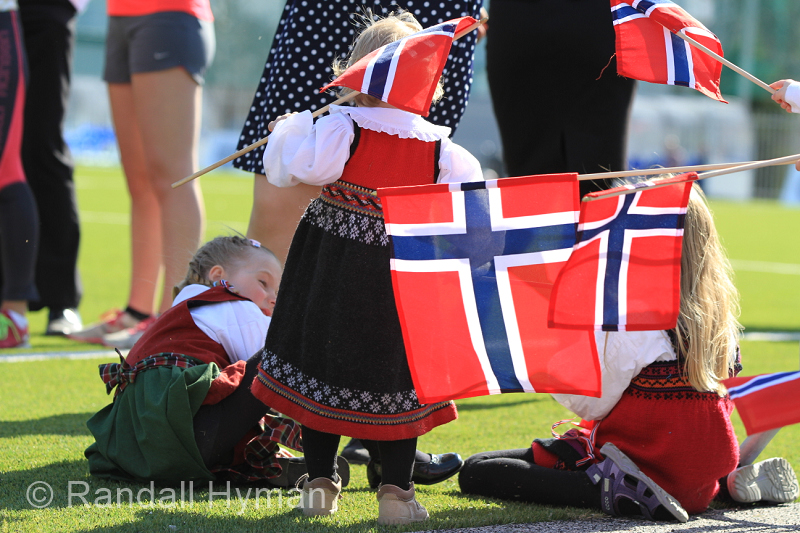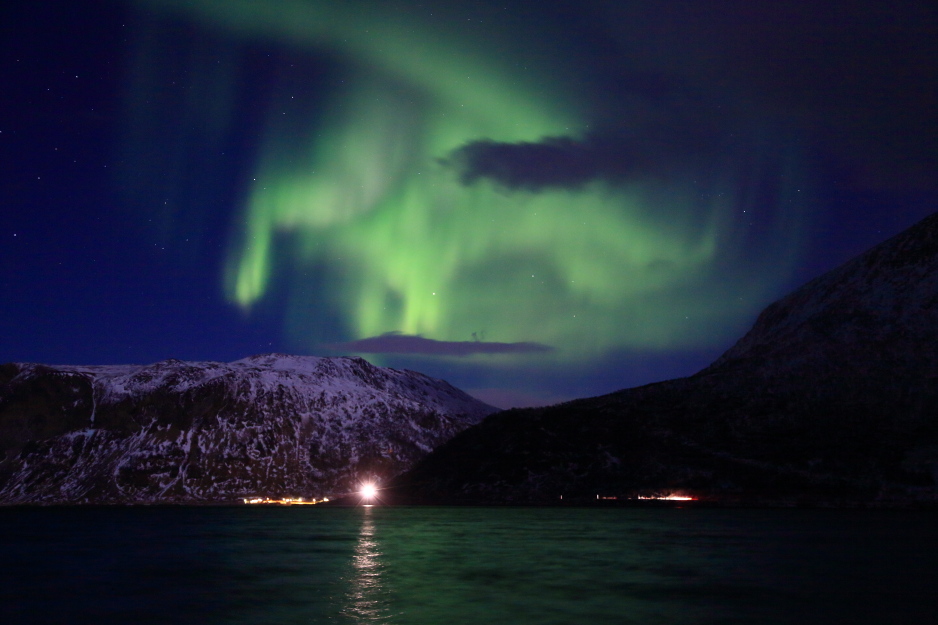
Northern Lights, January 2015, over Kvaløya Island, Norway.
© Randall Hyman
The Arctic Frontiers policy and science conference in northern Norway this January was marked by fiery debate as hundreds of participants reacted to the landmark announcement on the first day that the government was inviting 43 companies to bid on new oil leases in the Barents Sea. It was the first such offering in 20 years, and it contradicted advice from Norway’s own scientists that oil activity should remain far south of the fluctuating polar sea-ice edge.
The new lease parcels overlap what some consider the hazardous “slush line,” where ice and storm make extraction technologically and environmentally risky. This zone is the cradle of life in the Arctic Ocean, where the ice edge recedes each spring under 24-hour sunlight, generating vast algal blooms that feed the entire food chain, from fish to seals to polar bears. Opponents of the new lease blocks say that an oil spill in this remote and gale-prone region would be disastrous and difficult to contain.
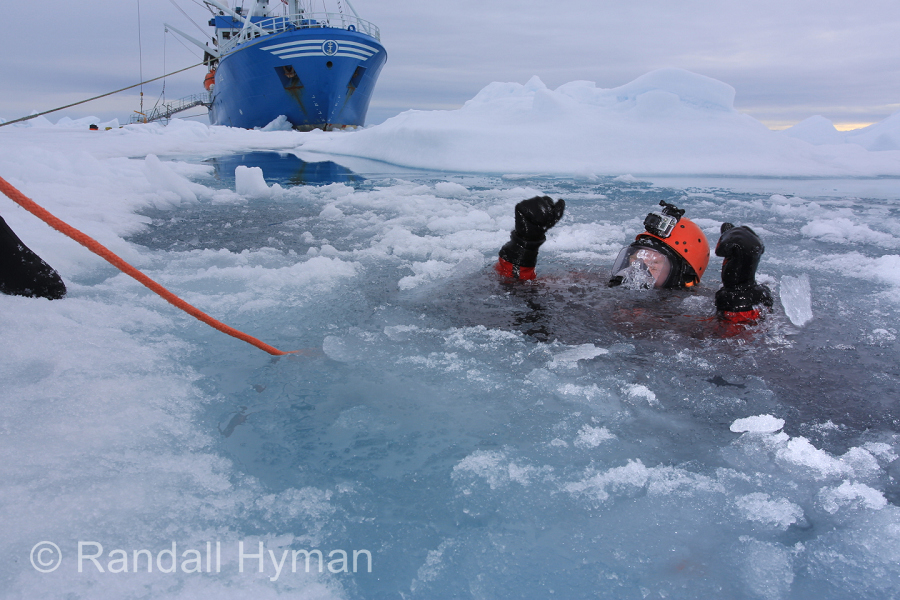
Norwegian Polar Institute scientist investigates marine life at the Arctic Ocean ice edge, 82º North latitude.
© Randall Hyman
Throughout the conference, prime ministers, oil execs, environmentalists and scientists debated management of Arctic resources in light of a startling energy study published by Nature in early January. The study, based on careful modelling of the Earth’s carbon budget and the United Nations’ call to cap Industrial Age global temperature rise at 2°C (3.6°F), suggests that 4/5 of the world’s coal reserves, 1/3 of its oil and 1/2 of its gas must remain forever untapped.
The study specifically cites Arctic oil as essentially off limits, and Norwegian Prime Minister Erna Solberg declared at the conference that her country was entering a new “gas age” and would be slowly leaving oil behind. Environmentalists and policy wonks warned of “stranded assets” — i.e., extraordinarily expensive, taxpayer-subsidized oil and gas rigs left abandoned in the Arctic Ocean in a post-oil economy three decades from now.
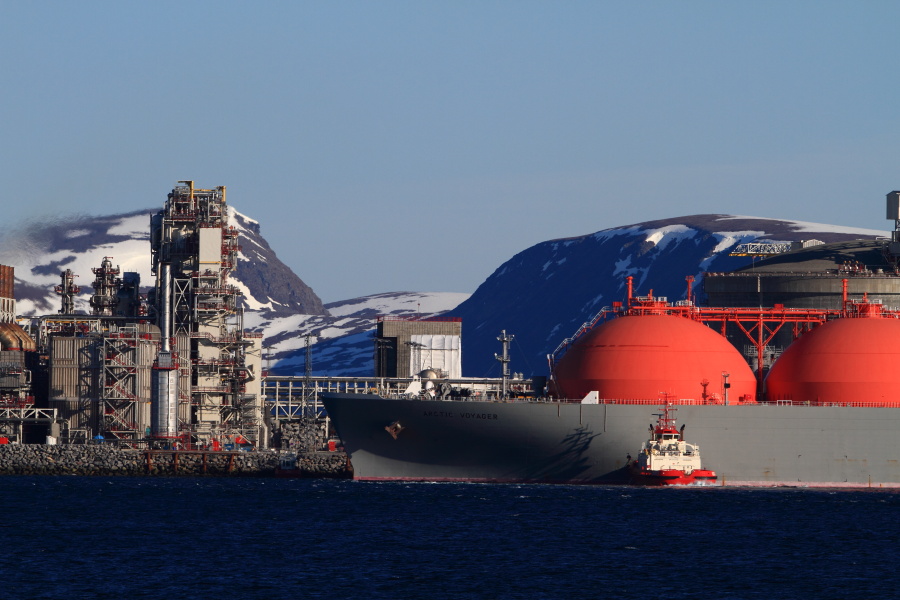
Tanker ship docks at liquified natural gas plant at the gateway to the Barents Sea in Hammerfest , Norway.
© Randall Hyman
By any measure, these are precarious times in the Arctic. Oil prices are tumbling and many Barents Sea exploration sites are yielding mediocre results. While the petroleum industry desperately looks to slash costs, environmentalists see cheap, $50/barrel oil as a blessing. For the short term, with a break-even point of $100/barrel, Arctic oil is just too expensive to drill.
Nonetheless, oil companies and some Arctic Council nations are betting on oil for the long term. Since planting its flag on the seabed at the North Pole, Russia has been reopening mothballed Cold War defense sites across its vast Arctic coastline. In a counter move, Denmark recently laid claim to all gas and oil resources at the Pole by extending Greenland’s subsea mineral rights far north of its icy shores. For its part, the United States owns only one active heavy icebreaker to deal with maritime emergencies in the Arctic compared with six nuclear icebreakers operated by Russia.
With the US assuming chairmanship of the Arctic Council from Canada in April, President Obama recently appointed Admiral Bob Papp, former head of the Coast Guard, as special representative to the Arctic. Papp spoke at the conference, calling for caution regarding energy development in the Arctic, in stark contrast to the pro-development leanings of Canada.
Papp’s concerns are worth noting as the US prepares to open the Chukchi and Beaufort Seas to drilling on one side of the Arctic and Norway expands Barents Sea claims on the other side. Oil industry assurances that Arctic operations can be conducted safely ring hollow for environmentalists who remember the 1989 Exxon Valdez spill in Alaska’s Prince William Sound and Royal Dutch Shell’s disastrous drillship wreck near Kodiak Island in 2012, which, like the BP oil disaster, was the result of a chain of reckless cost-cutting decisions.
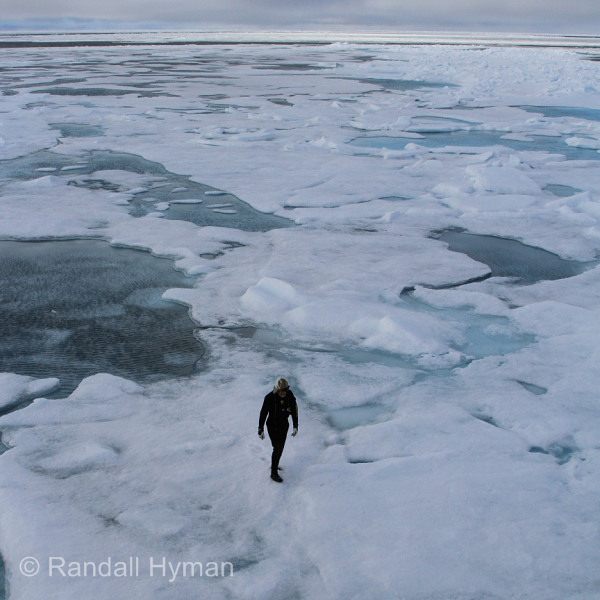
Norwegian Polar Institute scientist walks along Arctic Ocean ice edge at 82º North.
© Randall Hyman
Meanwhile, the ice continues to melt, with Arctic temps rising twice as fast as the rest of the globe. While experts estimate that 13% of the world’s undiscovered oil and 30% of its untapped natural gas lie beneath the Arctic Ocean, reaching them depends on how quickly the Arctic melts and, conversely, how effectively the world curbs greenhouse gas emissions. Scientists predict an ice-free North Pole by 2030.
